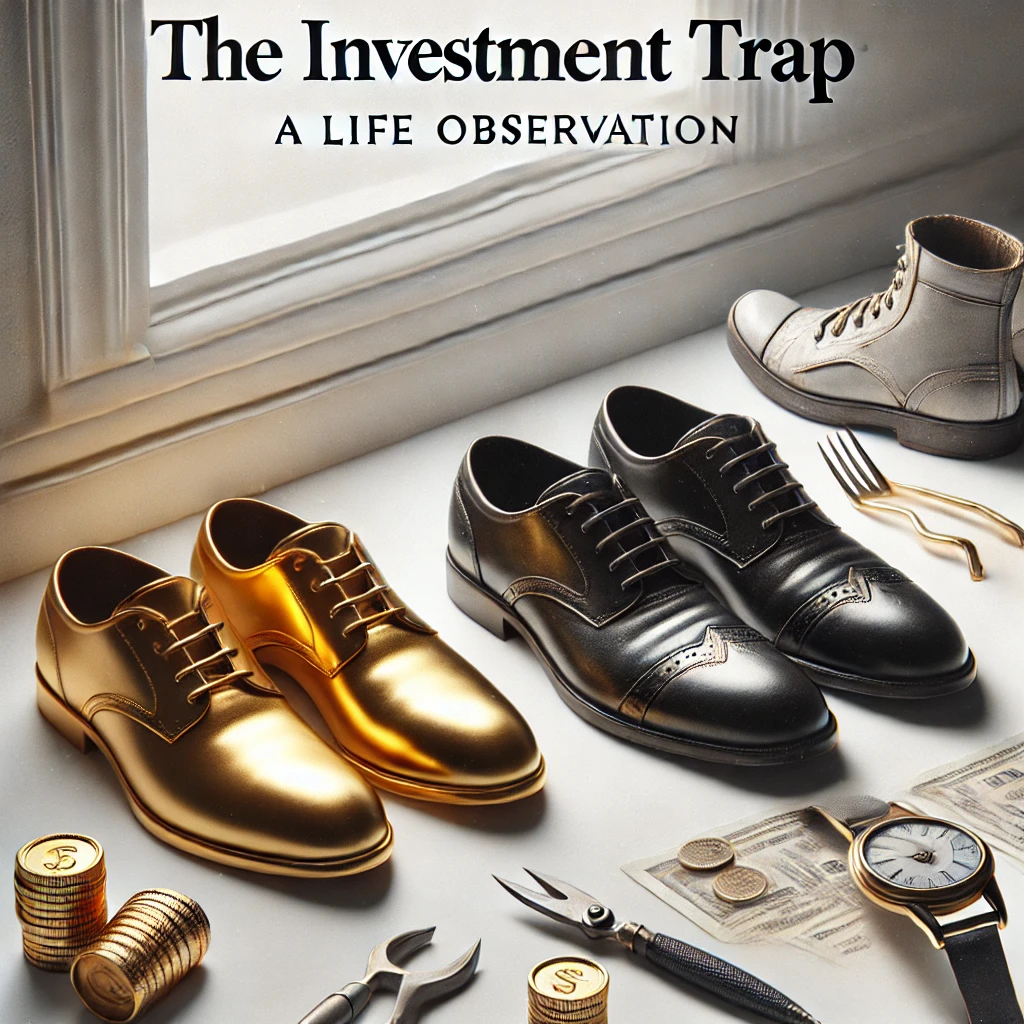In today’s financial landscape, investors are often bombarded with advice that prioritizes non-tangible or speculative assets such as SPACs, cryptocurrencies, NFTs, and other investments without intrinsic value. While these investments can offer significant returns, they also come with high risks due to their lack of true backing. In contrast, tangible assets like mines, farms, lands, energy plants, and commodities provide enduring value and are crucial for meeting essential human needs. This blog explores the importance of these true wealth assets and highlights the purposeful brainwashing steering investors away from them.

Situational Analysis: The False Allure of Speculative Investments
The modern investment narrative often centers around high-tech, high-risk assets that promise substantial returns but come with equally substantial risks. Cryptocurrencies, NFTs, and other digital assets have captivated the market’s attention, creating a speculative frenzy that can lead to significant volatility and potential losses.
This speculative focus diverts attention from tangible assets that have consistently provided stability and value. The financial media and some investment advisors often downplay these assets, labeling them as outdated or less exciting. However, this perspective ignores the critical role that tangible assets play in the global economy and their intrinsic value.
The Misleading Nature of Speculative Assets
Speculative assets often lure investors with the promise of high returns but lack the intrinsic value that tangible assets provide. Cryptocurrencies and NFTs, for example, are highly volatile and can result in significant financial losses. These assets are not tied to physical goods or productive enterprises, making them susceptible to market manipulation and speculative bubbles.
In contrast, tangible assets have intrinsic value that is not subject to the whims of market speculation. They provide essential goods and services that are always in demand, ensuring their long-term value and stability.
The Enduring Value of Tangible Assets
Tangible assets, also known as assets with superior intrinsic value, are crucial to human well-being and the global economy. These assets provide essential goods and services that support everyday life and long-term prosperity. Let’s explore why these assets are vital:
1. Mines
Intrinsic Value: Mines, particularly those extracting precious metals like gold and silver, offer a reliable store of value. Precious metals have historically been a safe haven during economic downturns, retaining value even when other investments falter. They are essential for various industrial applications, including electronics and renewable energy technologies.
2. Farms
Intrinsic Value: Agricultural investments provide consistent returns through the production of essential commodities like food and livestock. Farms offer a tangible product that is always in demand, making them a stable investment option. As the global population continues to grow, the demand for agricultural products will only increase, ensuring the long-term viability of farm investments. Additionally, they contribute to food security, a fundamental human need.
3. Lands
Intrinsic Value: Land ownership is one of the oldest and most reliable forms of investment. Land is a finite resource, and its value tends to appreciate over time. Whether used for agriculture, real estate development, or natural resource extraction, land offers diverse opportunities for generating income and building wealth. Land provides space for housing, agriculture, and natural habitats, essential for human life and biodiversity.
4. Energy Plants
Intrinsic Value: Investing in energy infrastructure, such as solar farms, wind turbines, and other renewable energy sources, not only provides steady returns but also contributes to sustainable development. As the world shifts towards cleaner energy, these investments are poised to become even more valuable. Energy plants are crucial for powering homes, industries, and transportation, supporting modern civilization.
5. Commodities
Intrinsic Value: Commodities like oil, natural gas, and agricultural products are the backbone of the global economy. Investing in these tangible goods provides exposure to essential industries and can act as a hedge against inflation and currency devaluation. Commodities are vital for manufacturing, transportation, and food production, making them indispensable for daily life and economic stability.
Challenges and Solutions
1. Accessibility
Challenge: Tangible assets can be challenging to acquire and manage due to their physical nature and regulatory requirements.
Solution: Partnering with specialized investment firms or utilizing platforms that facilitate the acquisition and management of tangible assets can help mitigate these challenges. Additionally, fractional ownership models are becoming more popular, allowing investors to buy into high-value assets without needing to purchase them outright.
2. Market Volatility
Challenge: While tangible assets are generally more stable, they are not entirely immune to market fluctuations.
Solution: Diversification across various types of tangible assets can help reduce risk. For example, combining investments in agriculture, precious metals, and energy can provide a balanced portfolio that is more resilient to market changes.
The Purposeful Brainwashing
The modern investment world often promotes non-tangible assets through sophisticated marketing and media campaigns, creating a perception that these are the only paths to significant wealth. This narrative is not accidental but rather a purposeful strategy by certain market players to divert attention from tangible assets.
Investors are led to believe that high returns are only achievable through speculative assets, despite the inherent risks. This brainwashing not only puts investors’ money at risk but also detracts from the real, sustainable value that tangible assets provide.
Ease of Access to False Investments vs. Tangible Assets
In today’s digital age, accessing speculative investments has become incredibly easy. A few clicks on a smartphone or computer can enable an individual to buy cryptocurrencies, NFTs, or shares in SPACs. Online platforms and apps have democratized access to these high-risk, high-reward investments, making it appealing for both novice and experienced investors.
On the other hand, accessing tangible assets is often more complex and requires significant effort and expertise. Investing in mines, farms, energy plants, or commodities usually involves understanding the industry, navigating regulatory frameworks, and often needing substantial capital. This complexity acts as a barrier for many investors, even though these assets offer more stability and intrinsic value.
Challenges in Accessing Tangible Assets:
- Regulatory Hurdles: Acquiring and managing tangible assets often requires compliance with various local and international regulations, which can be daunting for individual investors.
- Capital Requirements: Tangible assets usually require more significant capital investment compared to speculative digital assets, making them less accessible to smaller investors.
- Market Knowledge: Investing in tangible assets requires a deep understanding of the market, industry trends, and potential risks, which can be a steep learning curve for many.
Solutions for Easier Access:
- Investment Firms: Partnering with specialized investment firms can provide the necessary expertise and resources to invest in tangible assets effectively.
- Fractional Ownership: Emerging models of fractional ownership are making it easier for smaller investors to gain exposure to high-value tangible assets without needing substantial capital upfront.
- Education and Resources: Increasing awareness and providing educational resources about the benefits and processes of investing in tangible assets can help more investors make informed decisions.
Conclusion
In an investment landscape dominated by non-tangible assets, it’s crucial to remember the enduring value of tangible investments. Mines, farms, lands, energy plants, and commodities offer stability, intrinsic value, and a hedge against economic uncertainty. By focusing on these true assets, investors can build a more resilient and diversified portfolio that stands the test of time.
Key Takeaways
- Mines: Reliable store of value with historical stability and essential industrial applications.
- Farms: Consistent returns through essential commodity production and contribution to food security.
- Lands: Diverse opportunities for generating income, building wealth, and providing space for essential human activities.
- Energy Plants: Steady returns and contribution to sustainable development and energy security.
- Commodities: Exposure to essential industries and a hedge against inflation and economic instability.
Investing in tangible assets is not just about preserving wealth; it’s about building a solid foundation for future generations. By rediscovering the value of these true investments, we can navigate the financial landscape with confidence and security.



















